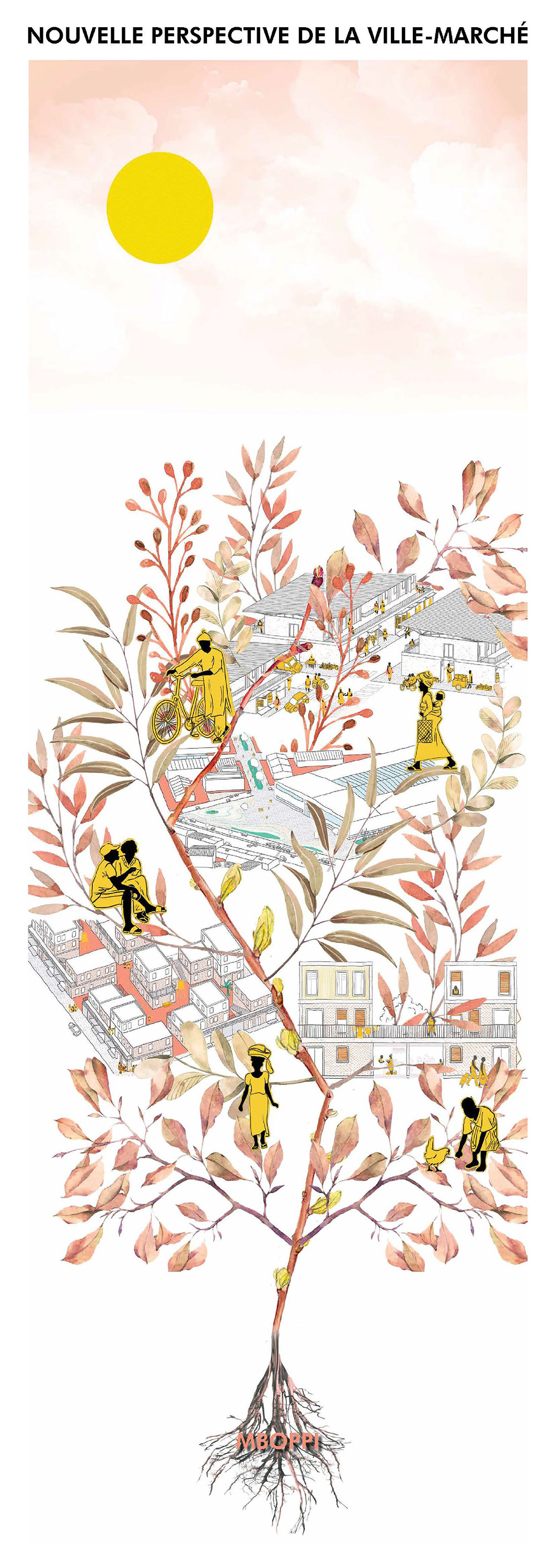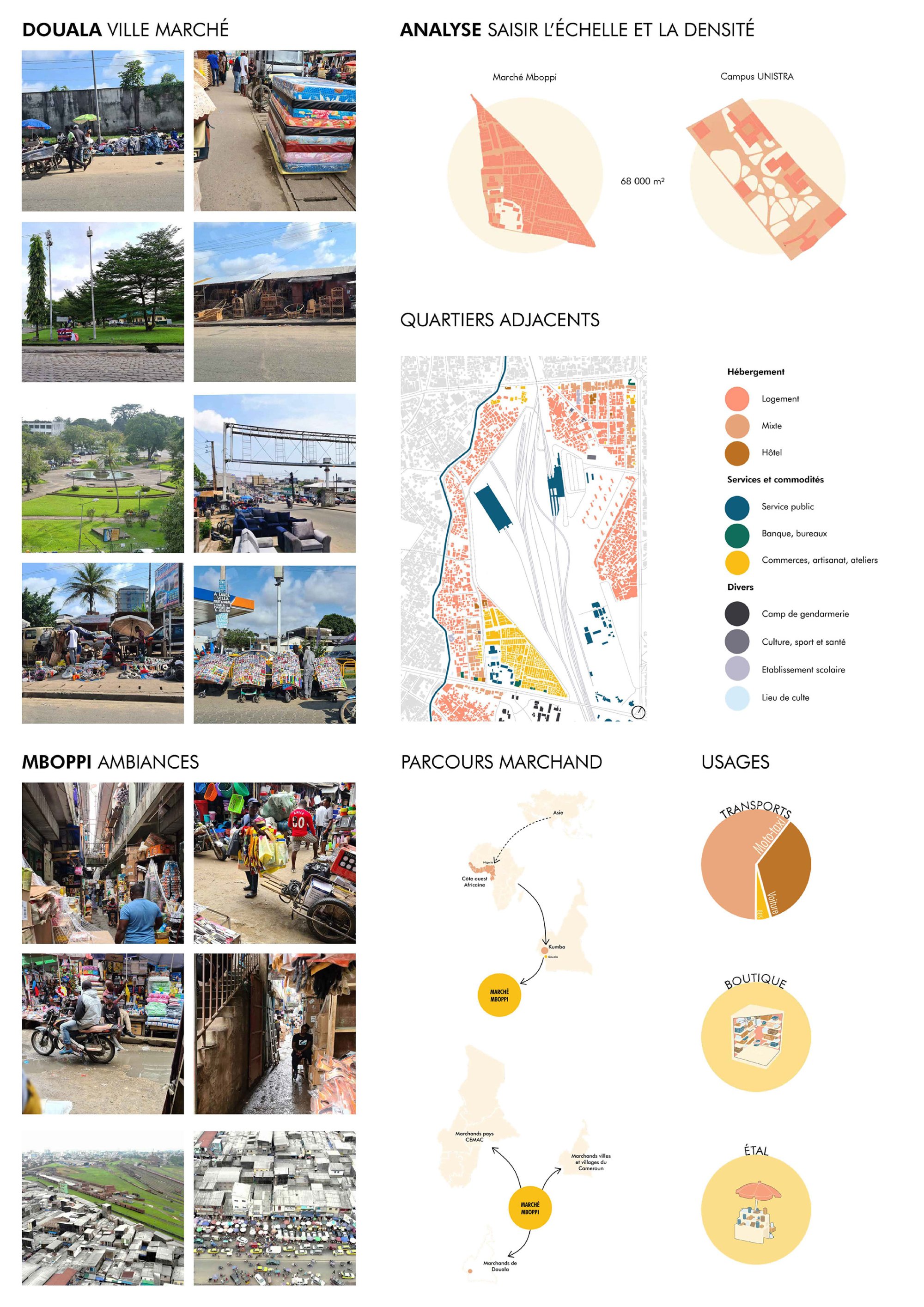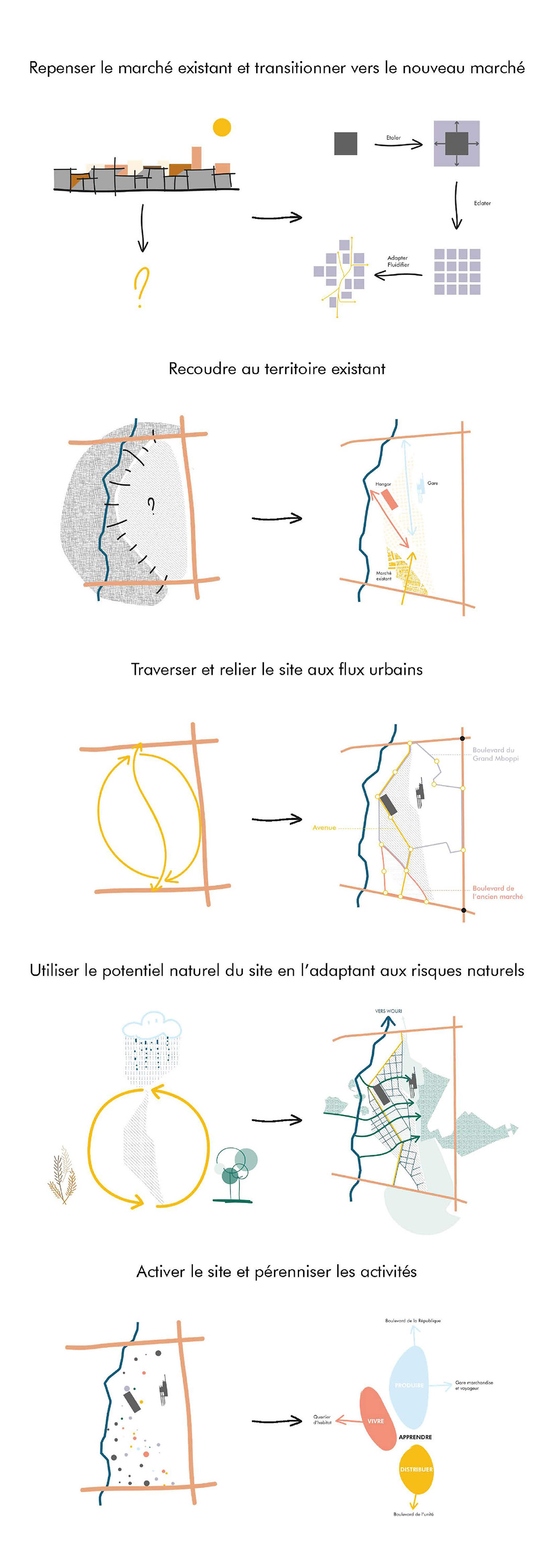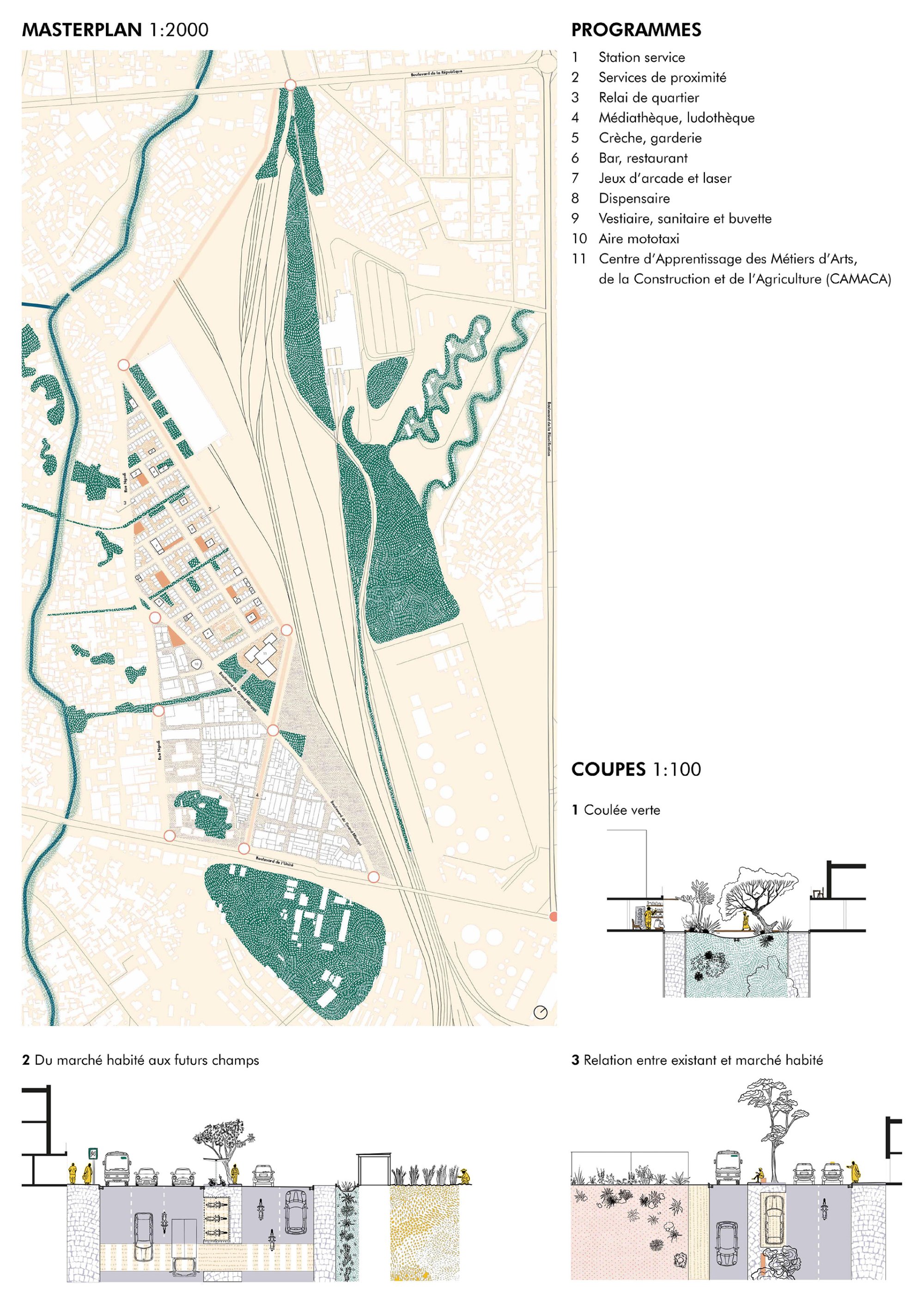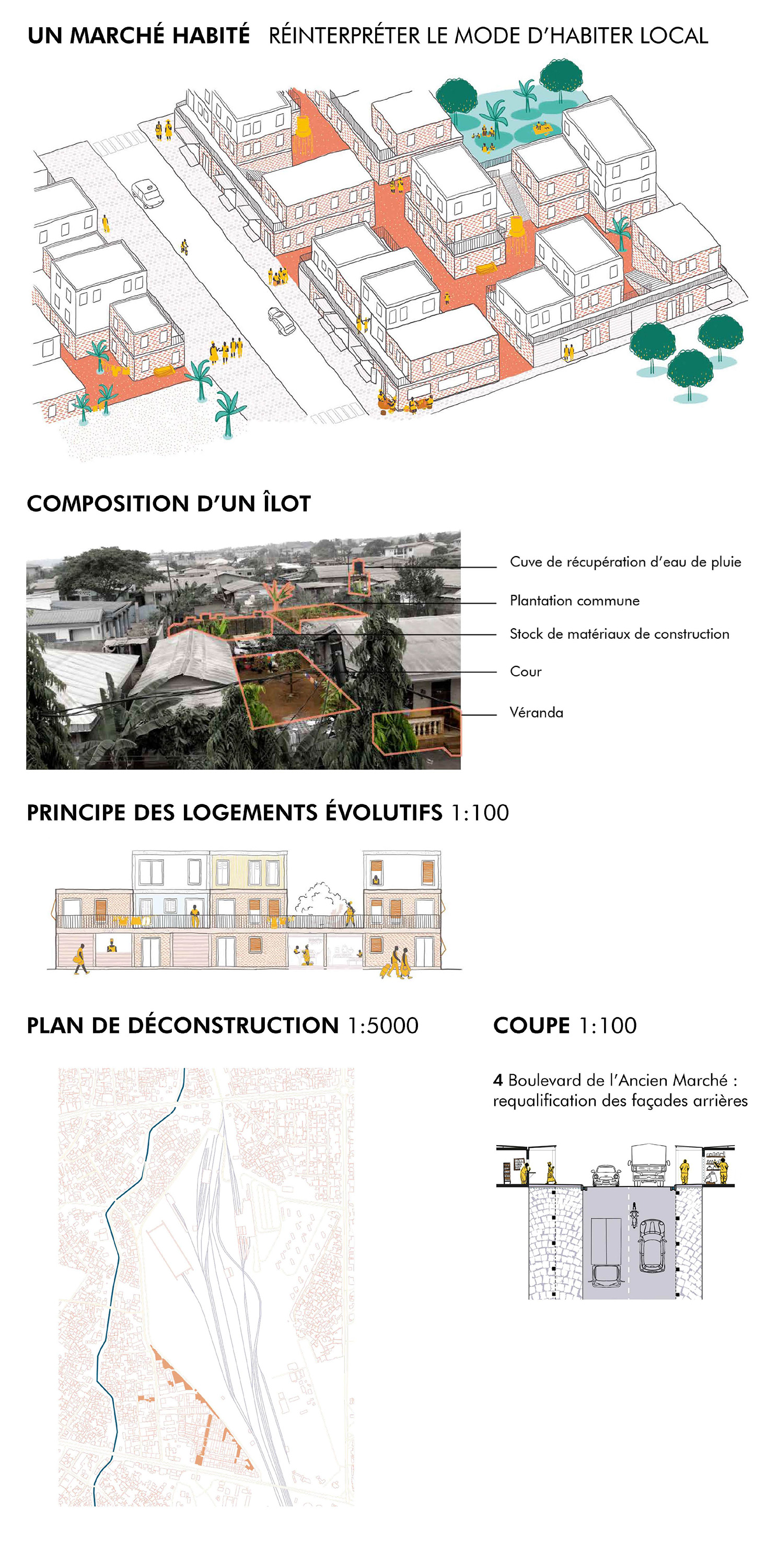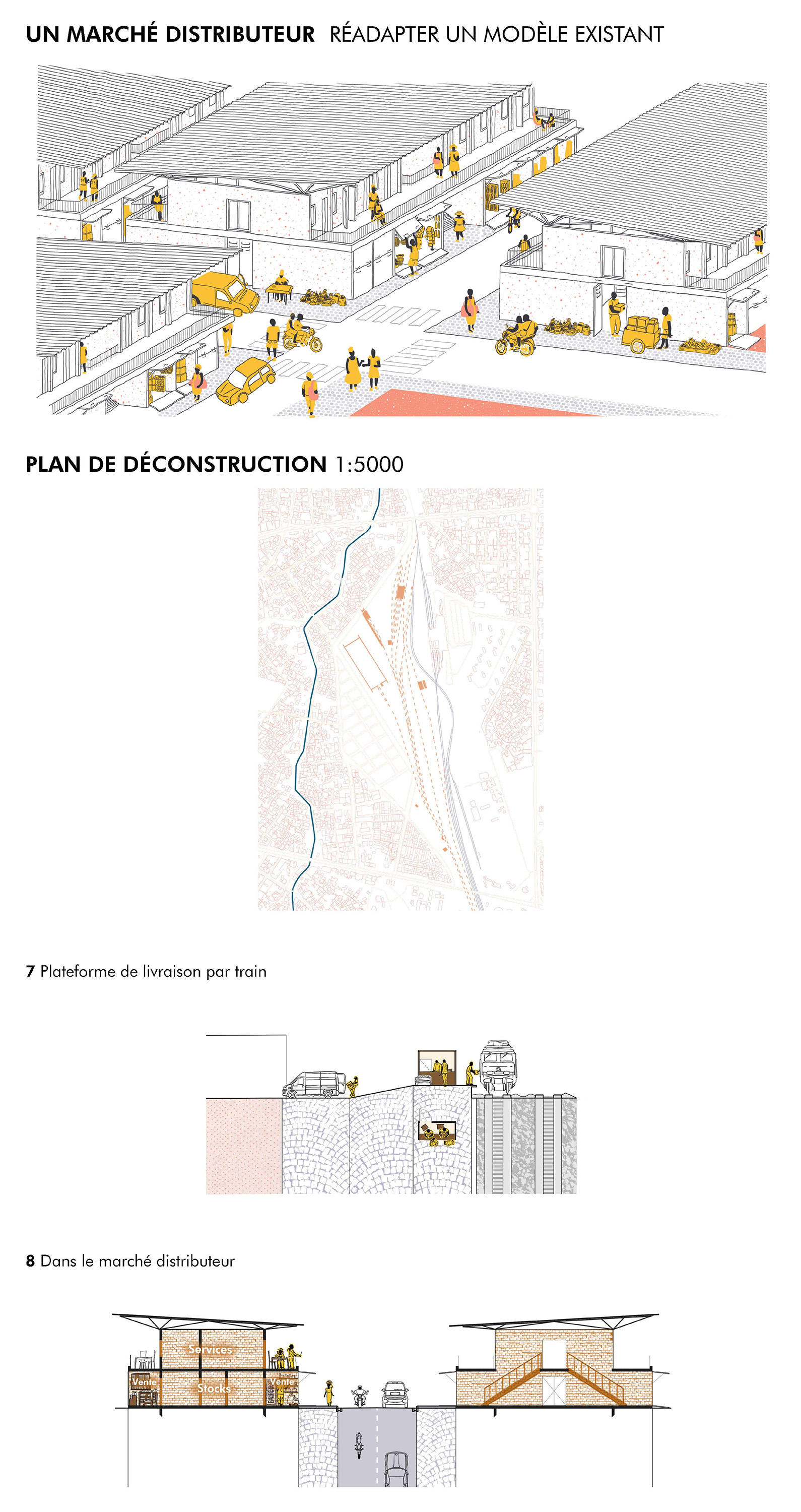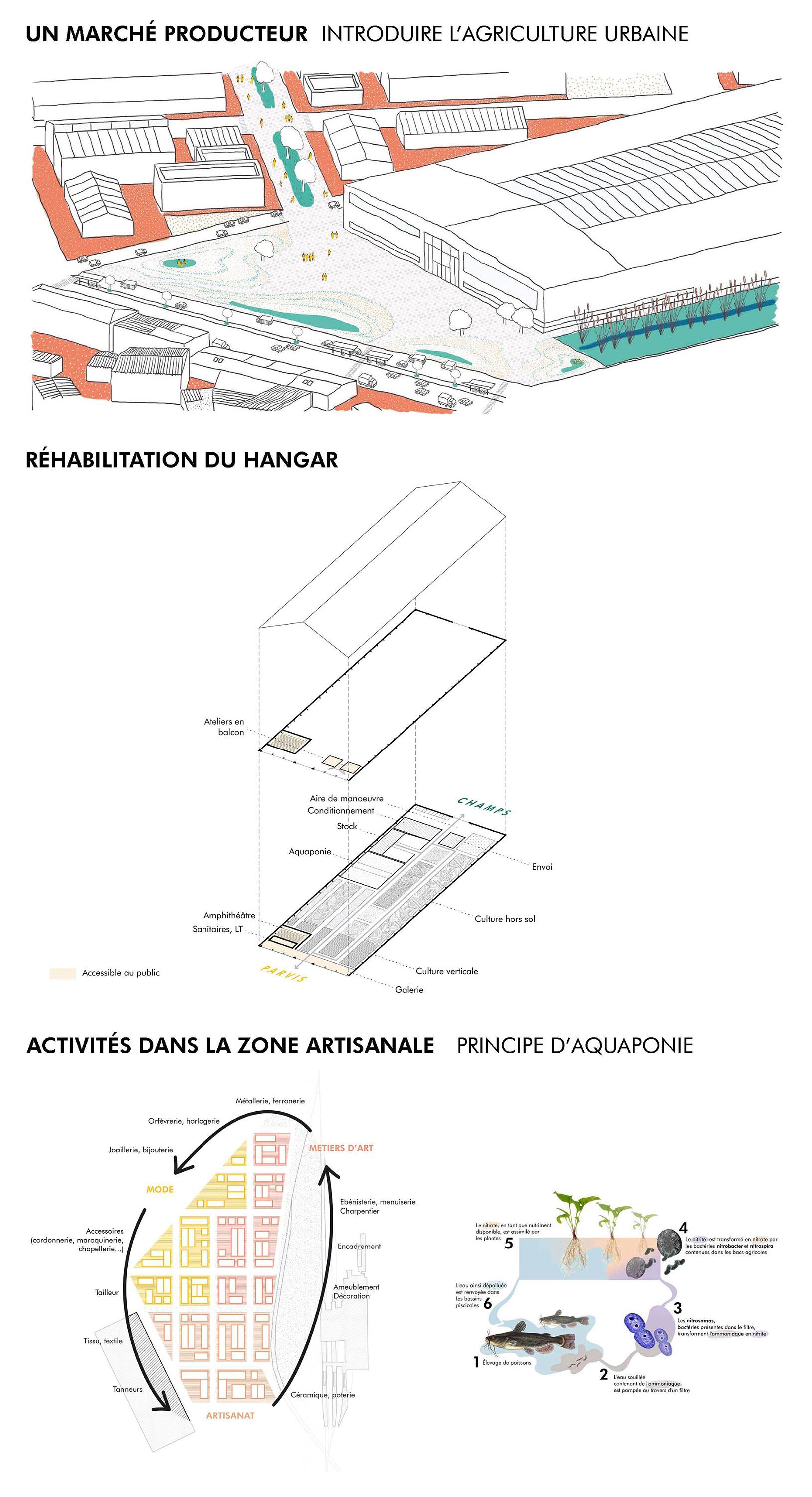Henriette Wamal
UN NOUVEAU SOUFFLE POUR LE MARCHÉ MBOPPI - Transition et évolution d’une ville-marché
Située dans une région littorale, Douala est la capitale économique du Cameroun. Son emplacement stratégique côtier a fait d’elle le siège du plus grand nombre d’industries et de marchés du pays.
Douala accueille différentes typologies d’espaces commerciaux, en particulier les centres commerciaux importés par la mondialisation et cherchant à influencer l’ensemble des modes marchands. Parmi ces multiples typologies, le marché – planifié ou spontané – tient une place prépondérante. Il s’immisce dans tous les interstices de la ville, faisant ainsi d’elle une « ville-marché ».
Le marché qui nous intéresse ici est le marché Mboppi, situé à la jonction entre le centre-ville et la grande périphérie de Douala. Représentant le plus grand marché d’Afrique centrale, sa spécialité est la vente en gros de produits excluant les vivres frais. Il vise ainsi autant des particuliers que des revendeurs de la ville, du pays et même de la sous-région d’Afrique Centrale. Bien que le marché représente l’un des lieux de rencontre privilégiés à Douala, Mboppi – comme la plupart des grands marchés de la ville – est limité par sa surdensité, sa compacité et son cloisonnement.
L’étude de ce marché et de la situation urbaine Doualaise ont permis de cibler les deux enjeux principaux de ce projet : rendre la rue au marché et le marché à la rue, en l’étalant, en l’éclatant et en le fluidifiant, et adapter ce marché aux nouveaux enjeux climatiques et énergétiques auxquels la ville devra faire face.
En réponse à ces enjeux, ce projet vient tout d’abord donner de l’ampleur au marché en l’étalant sur l’aire actuellement occupée par des rails de chemin de fer de maintenance avoisinant le site. Afin de rendre la rue au marché et le marché à la rue, il s’agit également d’éclater sa structure, de donner plus de largeur aux rues et d’offrir sur celles-ci une place identifiée à la vente, à l’achat, à la circulation piétonne et motorisée, à la végétation et au métabolisme urbain.
En vue d’accentuer le rôle de plaque tournante distributrice du marché Mboppi, ce projet propose de développer une dimension productive et agricole au cœur même du marché. Ce nouveau rôle, qui permettra la production et l’autosuffisance, viendra s’insérer à ses usages habituels. En guise de point de départ de cette nouvelle fonction, un centre d’apprentissage coopératif des métiers de l’artisanat, de l’agriculture et de la construction, à destination des acteurs et des producteurs du marché est mis en place au cœur du marché.
Enfin, une ville ne pouvant vivre sans habitations, ce projet intègre le développement de logements évolutifs au sein même du marché.
Le nouveau marché prend ainsi trois formes : le marché-distributeur (s’apparentant au marché existant), le marché-producteur et le marché-diffus intégrant les habitations et le tertiaire. La première s’accroche aux grands boulevards bordant le site au Nord et au Sud, la seconde, elle, se raccroche à la gare marchandise et voyageurs et la dernière au quartier d’habitat à l’ouest.
Ce projet de fin d’études propose ainsi de penser un nouveau rôle, de nouveaux usages et une nouvelle spatialisation du marché Mboppi, afin d’en faire un exemple pour de prochaines initiatives urbaines intégrant une fonction marchande à échelle équivalente.




